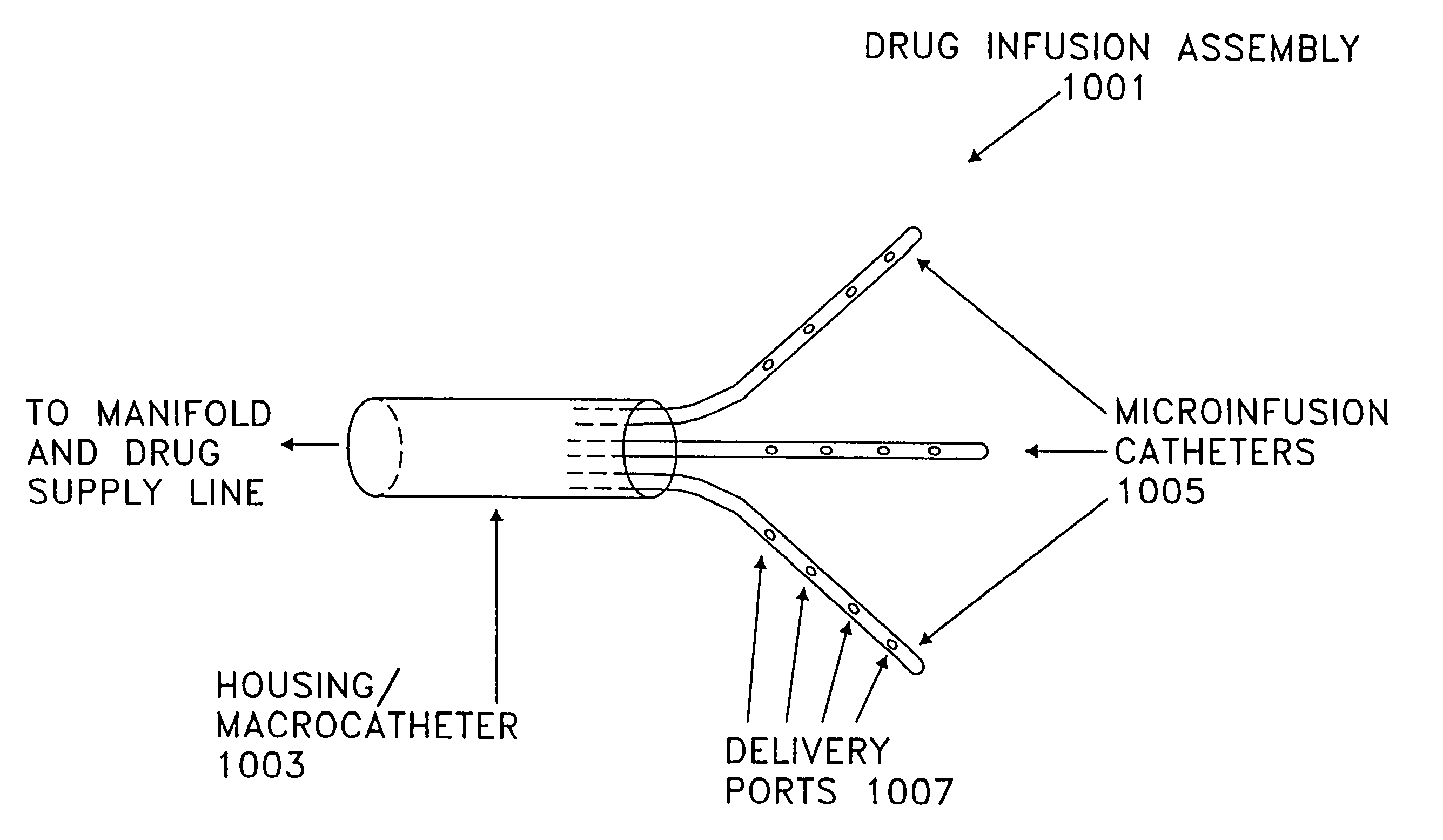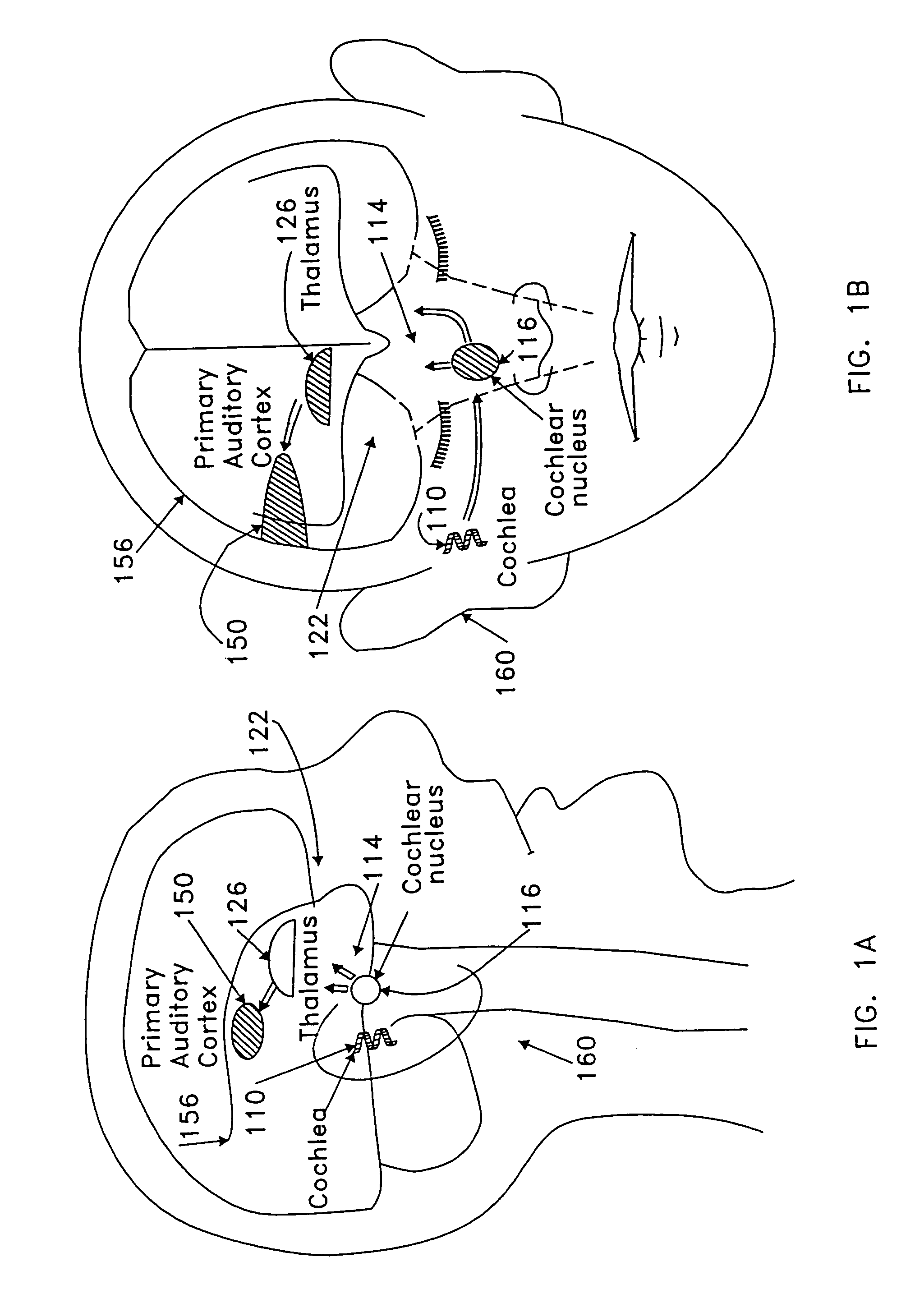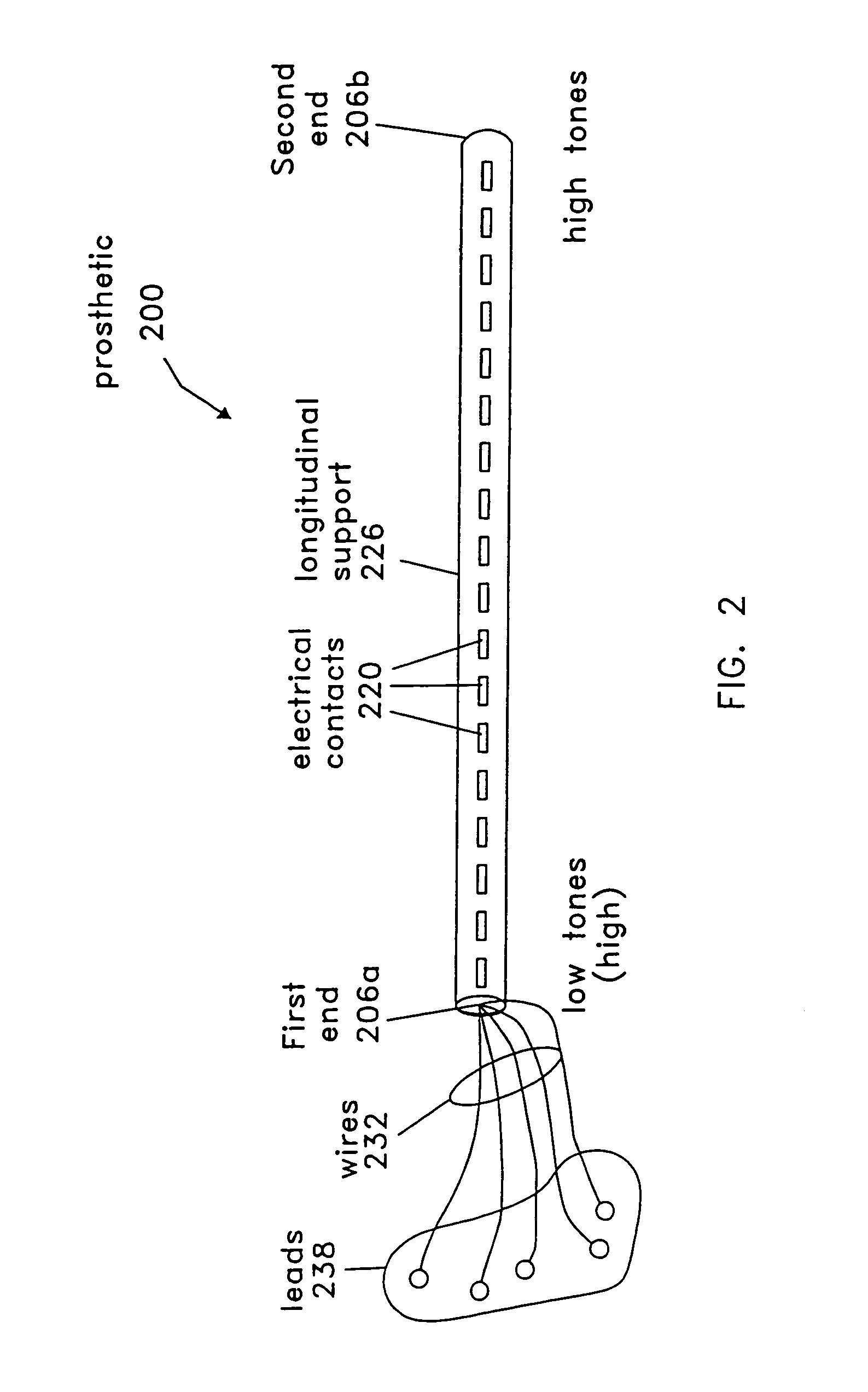Stereotactic hypothalamic obesity probe
a hypothalamic and tactic technology, applied in the field of tactic hypothalamic obesity probes, can solve the problems of inability to precisely stimulate very small volumes of brain, inability to access the patient's full “visual space", and many important design problems, and achieve the effect of high-resolution stimulation of the auditory cortex
- Summary
- Abstract
- Description
- Claims
- Application Information
AI Technical Summary
Benefits of technology
Problems solved by technology
Method used
Image
Examples
example 1
Method of Performing Magnetic Stereotactic Pallidotomy
[0300]Introducer tube 101 is stereotactically inserted through a burr hole in the patient's skull such that the open distal end 107 of introducer tube 101 is positioned close to the lateral globus pallidus. A dual purpose multicontact electrode assembly 103 including a flexible electrode support shaft 137 having a magnetic tip 133 is inserted into introducer tube 101, such that magnetic tip 133 of support shaft 137 is approximately in a desired location within the patient's brain. The patient is brought to the magnetic surgery suite, and electrode support shaft 137 of electrode assembly 103 is magnetically pulled into the globus pallidus, generally along the long axis of the globus pallidus, along a preselected trajectory. Once electrode support shaft 137 is suitably positioned to occupy the desired volume within the globus pallidus, the patient is removed from the magnetic surgery suite and returned to the hospital ward. While o...
example 2
Targeted Drug Delivery from a Dual Purpose Electrode Assembly for the Treatment of Epilepsy
[0301]Introducer tube 101 is stereotactically inserted through a burr hole in the patient's skull such that the open distal end 107 of introducer tube 101 is positioned within the cerebral cortex. A dual purpose neuron-monitoring / drug delivery electrode assembly 103 including a flexible electrode support shaft 137 having a magnetic tip 133 is inserted into introducer tube 101, such that the magnetic tip 133 of support shaft 137 is approximately in a desired location within the patient's skull. The patient is brought to the magnetic surgery suite, and electrode support shaft 137 of electrode assembly 103 is magnetically manipulated until it occupies the desired position. Once electrode support shaft 137 is suitably positioned, the patient is removed from the magnetic surgery suite and taken to the epilepsy monitoring unit, where the physiological activity of a number of neurons is monitored. Ba...
example 3
Method for Treating Obesity by Hypothalamic Electro-Stimulation
[0304]A burr hole is strategically placed in the patient's cranium for the purpose of stereotactic placement of a macrocatheter of the hypothalamic obesity probe apparatus in a zone of the patient's brain adjacent to the hypothalamus. An introducer tube is stereotactically inserted through the burr hole. The macrocatheter, which includes a magnetic collar affixed at the distal end of the macrocatheter, is inserted into the introducer tube. The patient is transferred to the magnetic surgery suite, and the magnetically equipped macrocatheter is magnetically manipulated such that it is positioned adjacent to the hypothalamus. (At this point the patient may be removed from the magnetic surgery suite). At least one electrode support shaft bearing a plurality of stimulation electrodes is introduced from the macrocatheter into a first region of the hypothalamus. Because the plurality of stimulation electrodes are arranged longi...
PUM
 Login to View More
Login to View More Abstract
Description
Claims
Application Information
 Login to View More
Login to View More - R&D
- Intellectual Property
- Life Sciences
- Materials
- Tech Scout
- Unparalleled Data Quality
- Higher Quality Content
- 60% Fewer Hallucinations
Browse by: Latest US Patents, China's latest patents, Technical Efficacy Thesaurus, Application Domain, Technology Topic, Popular Technical Reports.
© 2025 PatSnap. All rights reserved.Legal|Privacy policy|Modern Slavery Act Transparency Statement|Sitemap|About US| Contact US: help@patsnap.com



